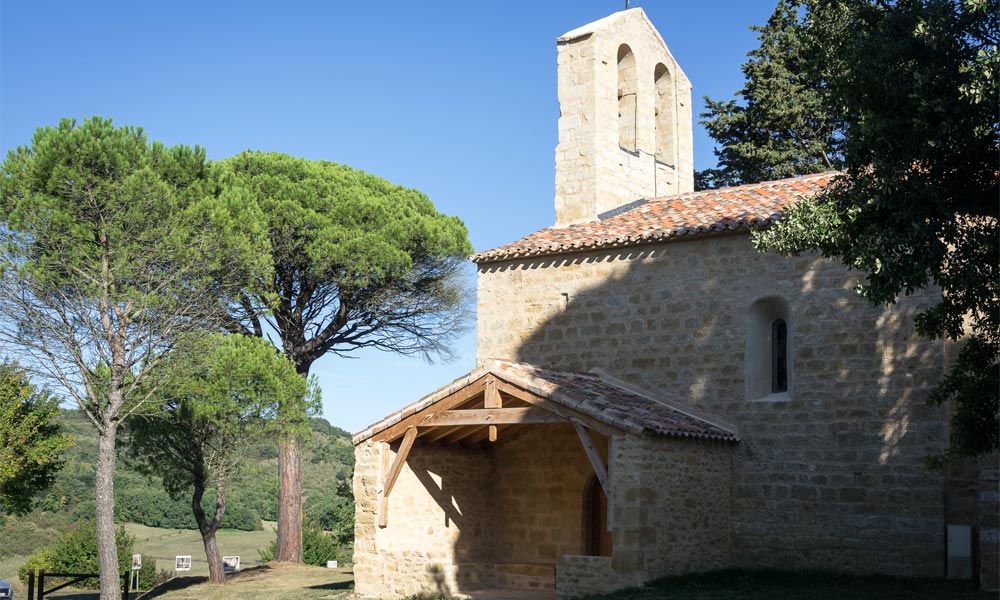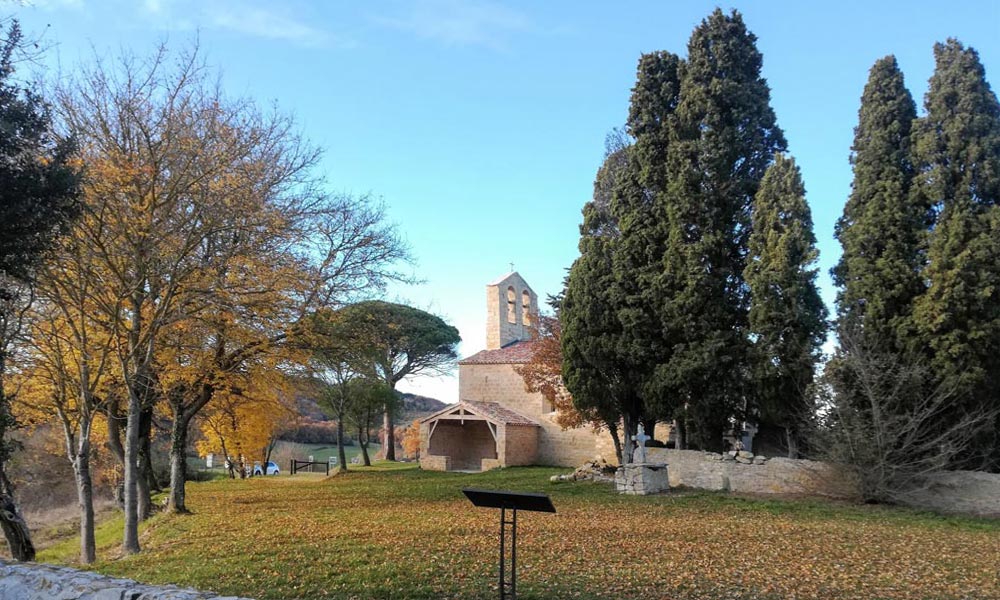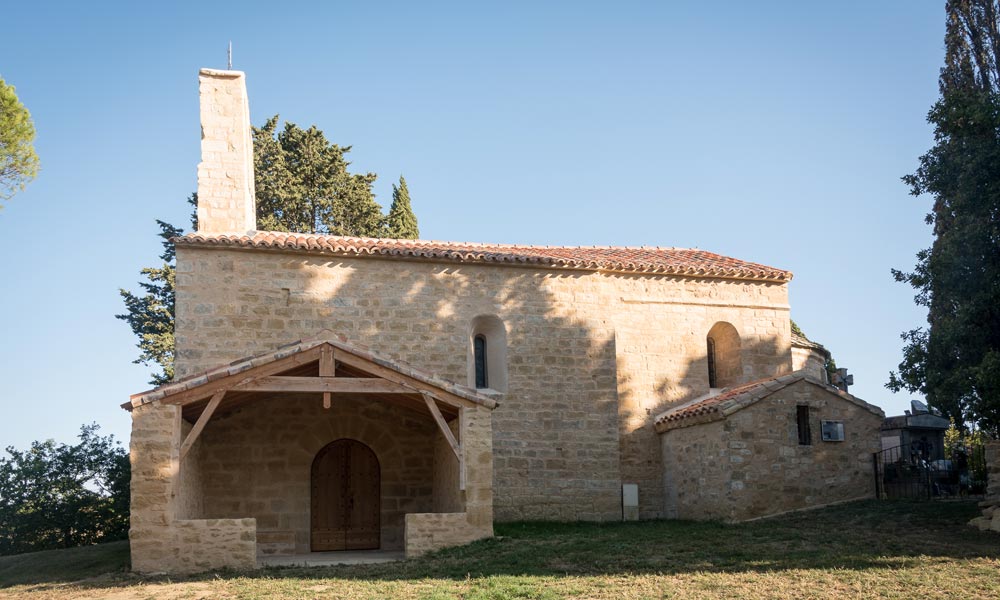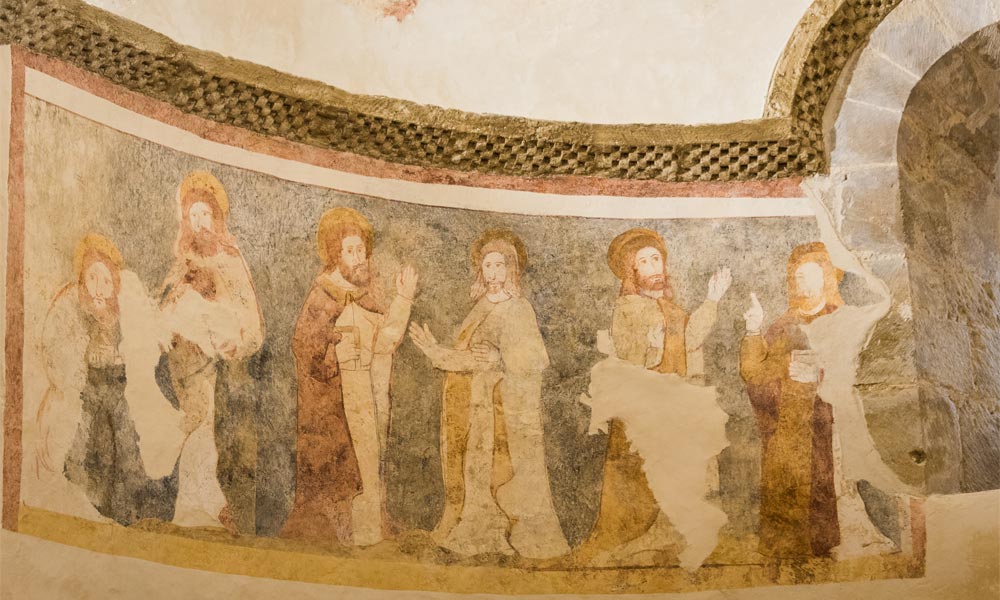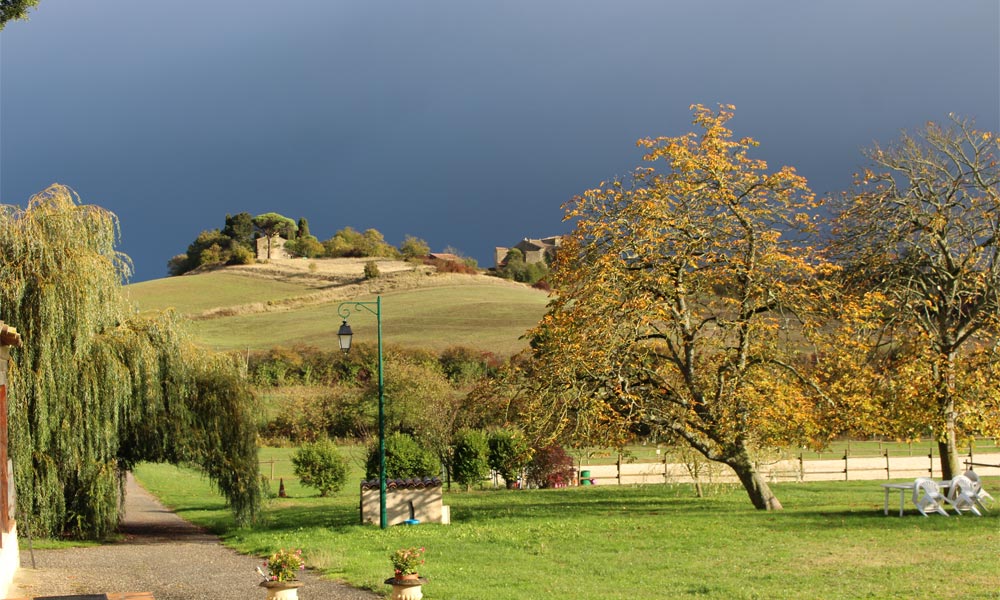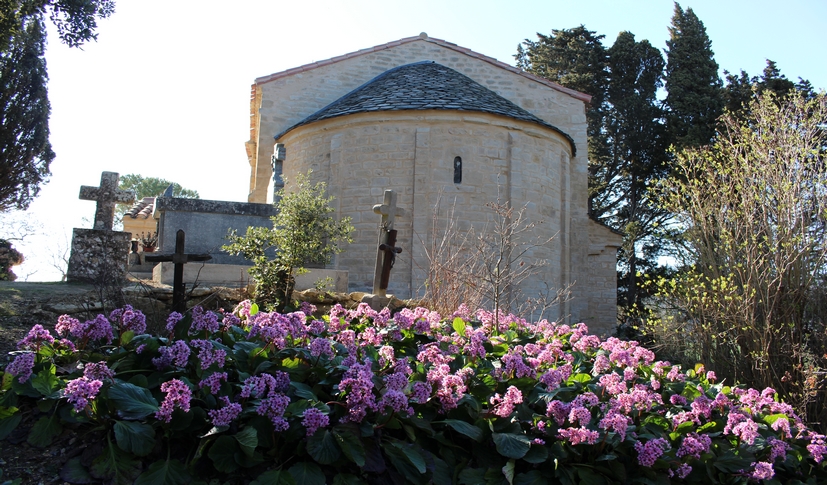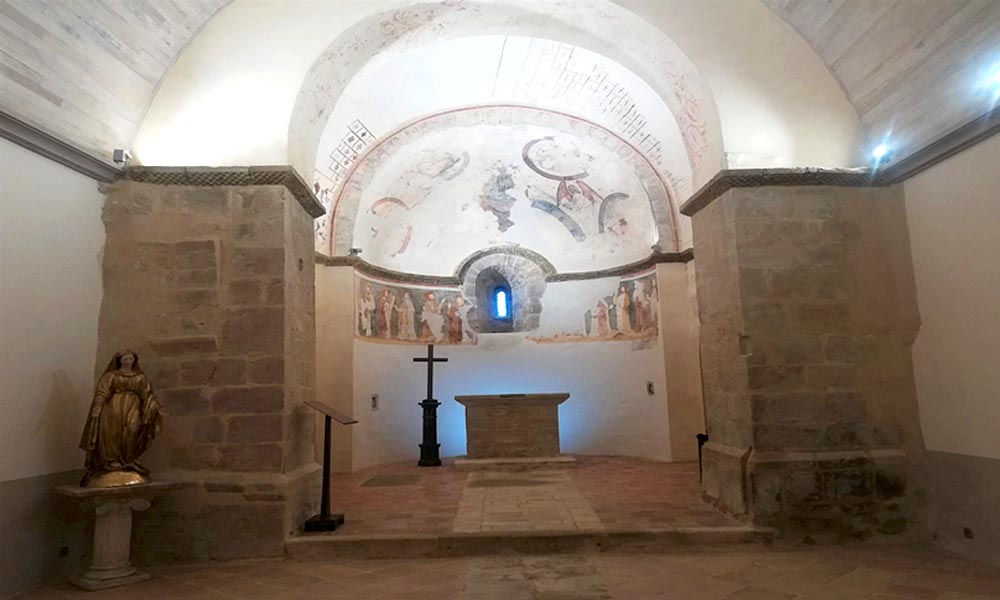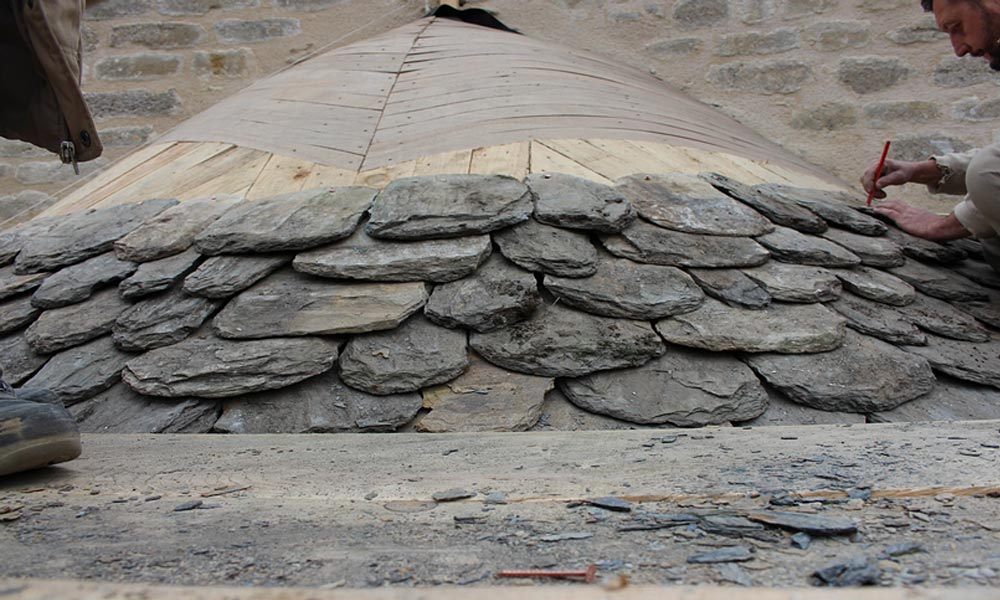Chapel of Sainte-Foi
The Domaine de la Trille offers a charming view of the village of Sainte Foi and its chapel. A 5 min walk from the farm, discover this heritage completely restored with beautiful murals
The Chapel has been a Historic Monument since 1995.
Sainte-Foi has on the top of the hill a charming chapel of the twelfth century in which some frescoes remained. The setting is beautiful with beautiful trees under which a small cemetery nestles.
The chapel of Sainte-Foi is mentioned in 1207 in an inventory of the properties managed by the Abaye de Sainte Foy de Conques in Aveyron.
Admirably well placed on the road from Aragon to Conques it was erected on a promontory, probably former Merovingian shrine in order to redeem the pagan site as was often the case at the time. It is of cruciform shape directed from east to west, it is typical of the style of the Romanesque Languedoc chapels.
It is built of large stone rubble, the roof is tile channel but probably originally stone slabs with a bell tower with double arcade and a porch housing the entrance.
Inside there is a terracotta slab floor, a stoup and monolithic baptismal font, the choir is highlighted by an interesting billet frieze and features traces of 14th century frescoes composed of biblical figures.
There is an atmosphere of serenity and meditation in this place in a beautiful landscape where you can see the Pyrenees.
Sainte-Foi d'Ariège and Sainte-Foy de Conques
“The abbey of Sainte-Foy de Conques in Aveyron was famous and prosperous throughout the Middle Ages after having recovered the relics of the Saint it developed considerably.
She even sent missionaries who in the south of France gave the name of Sainte-Foy, a good twenty villages, Sainte-Foy d’Ariège is one of them and as such we can say that we are a Conquoise foundation.”
Sainte Foi
The story goes that Foy, the daughter of a Roman scholar from Agen, converted to Catholicism under the influence of his nanny at the age of 12. In 302 AD, Dacian, proconsul d'Aquitaine, vigorously applied the anti-Christian edict of the emperor Diocletian. Foy falls into the clutches of the proconsul. There is Joan of Arc in Sainte-Foy because despite all the torture, she does not abjure. The proconsul then condemned her to the torment of the grill. A providential storm extinguished the fire. Mad with Dacian rage, she was beheaded. His buried and quickly venerated remains would have been at the origin of many miracles around the tomb of the saint, which made his notoriety. In particular, he is credited with having released prisoners.
On the lower left corner of the tympanum of the Conques abbey church, Foy is depicted prostrate. Behind her hangs the chains of prisoners freed by her intercession.
Sainte-Foy, "star" of the first Occitan tube!
No CD, no FM in the year 1000. And yet, the song of Sainte-Foy will become a real hit. She was to sing for centuries, helping to further establish Conques’s reputation. The story of Saint Foy is one of the first Occitan poems. When he is told, he will sing on the way to Saint James and will give heart to the belly to drive the infidel out of Spain! At the same time, Sainte-Foy will become not only one of the most venerated saints of the Middle Ages but also one of the symbols of the Reconquista, the reconquest of Spain.
